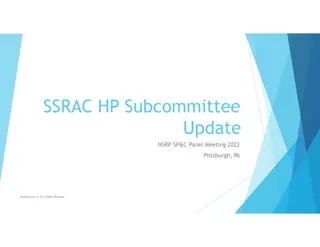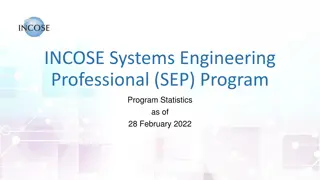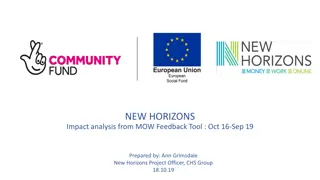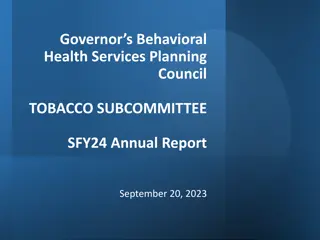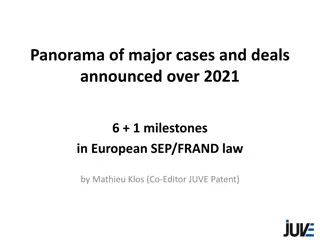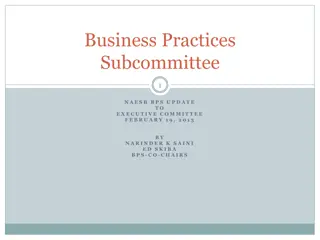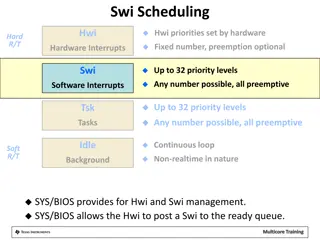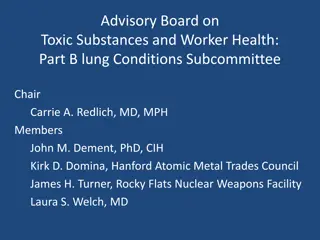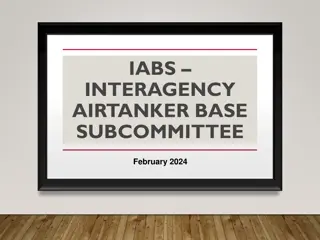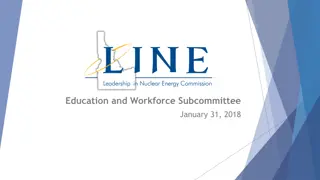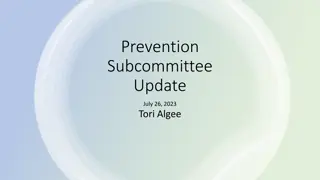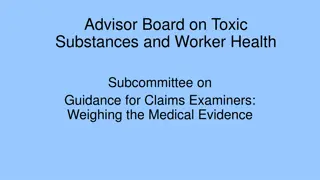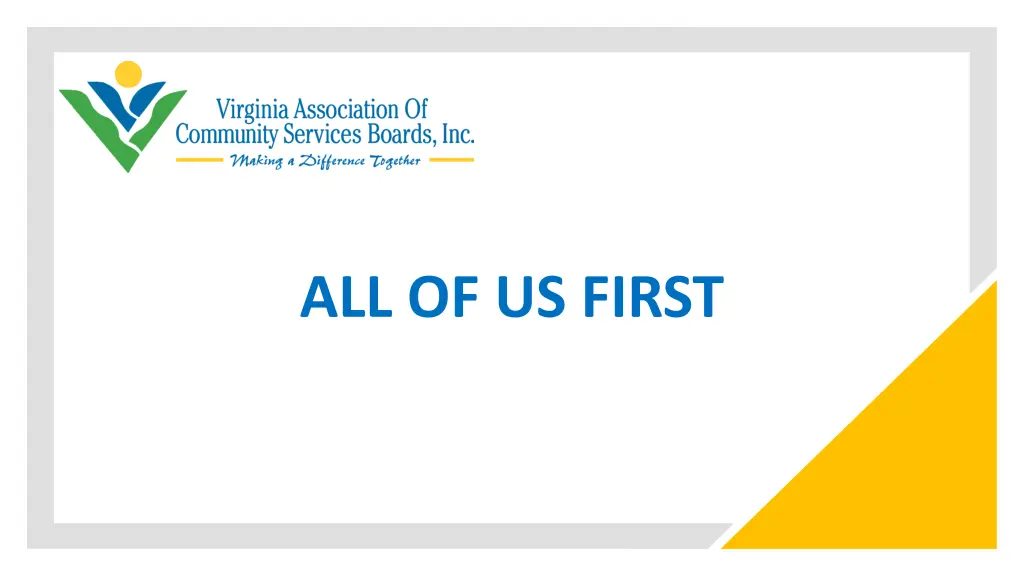
Chronic Workforce Shortages in Healthcare Sector: Impact & Solutions
Chronic workforce shortages in the healthcare sector, compounded by the pandemic, have led to significant job losses and vacancies in Virginia's Health Care and Social Assistance sector. This workforce disaster is reflected in high vacancy rates, turnover rates, and challenges in maintaining quality care for individuals with behavioral health and developmental disabilities. Without intervention, these challenges could result in service hour reductions and capacity limitations. Solutions must be found to address this critical issue.
Download Presentation

Please find below an Image/Link to download the presentation.
The content on the website is provided AS IS for your information and personal use only. It may not be sold, licensed, or shared on other websites without obtaining consent from the author. If you encounter any issues during the download, it is possible that the publisher has removed the file from their server.
You are allowed to download the files provided on this website for personal or commercial use, subject to the condition that they are used lawfully. All files are the property of their respective owners.
The content on the website is provided AS IS for your information and personal use only. It may not be sold, licensed, or shared on other websites without obtaining consent from the author.
E N D
Presentation Transcript
Chronic workforce shortages existed in the healthcare sector prior to the pandemic and have been compounded by the pandemic. Virginia s Health Care and Social Assistance sector lost 2100 jobs in July, a 5.5% decrease WORKFORCE DISASTER
The current average vacancy rate across CSBs is 15% The highest reported vacancy rate was 35% and the lowest was 3% Vacancy rates within specific programs can run far higher than the overall high of 35% Emergency Services and DD Direct Support Professionals are especially hard hit WORKFORCE DISASTER
There are currently approximately 2400 vacancies in our system. There is an average of 66 vacancies per CSB The highest number of vacancies in a CSB is 246 and the lowest is 7 WORKFORCE DISASTER
2019 employment data indicate that there were 10255 direct care FTEs in the CSB system While there are likely fewer direct care positions in the system in 2021, this ratio indicates a 24% vacancy rate WORKFORCE DISASTER
The average turnover rate across the CSB system in FY20 was 19% The highest turnover rate was 34% and the lowest was 4% In FY21, that increased to 21% The highest turnover rate was 36% and the lowest was 6% WORKFORCE DISASTER
This high turnover rate makes it difficult, if not impossible, to resolve the vacancies The situation is further complicated by the need for CSBs to function 24/7, operate under highly stringent state requirements and maintain direct client interaction with individuals with significant BH and DD needs WORKFORCE DISASTER
If not addressed, this disaster could cause CSBs to reduce service hours, reduce service capacity and consolidate group homes These strategies are not ideal but they are in line with similar steps that DBHDS was forced to take in closing multiple state psychiatric facilities to admissions and reducing bed of last resort capacity by more than 250 beds. WORKFORCE DISASTER
Mitigation will require additional time, funding and other resources Unfortunately, the special session budget did not include the hoped- for infusion of ARPA dollars to support workforce development for CSBs WORKFORCE DISASTER
ARPA funding directed to the CSBs was done so for the purposes of expanding programs and services The CSBs are incredibly grateful for this funding but ARPA funds are widely understood to be one-time or short-term and therefore not as conducive to service development as ongoing state general funds would be DISASTER MITIGATION
SNAPSHOT OF ARPA FUNDS DBHDS for State Facilities DBHDS for CSBs $45M for bonuses for direct care staff at state hospitals and training centers $10M for the continued expansion of community-based crisis services which may include mobile crisis and CRCs $1.2M to purchase PPE for state facilities $5M for PSH in NOVA; seems to be exclusively tied to state hospital discharges $50M to replace ventilation, water and/or sewer systems in DBHDS facilities $1.65M to expand the current dementia pilot to support an additional 60 people with design and implementation complete by 01 DEC 2021 $76.9M for salary adjustments for direct care staff at state hospitals and training centers (authorized to be included in the Governor s introduced budget for FY22-24) $5M to expand community-based SUD treatment $1.2M for PPE for state facilities (authorized to be included in the Governor s introduced budget for FY22-24) $20M for the continued expansion of community-based crisis (authorized to be included in the Governor s introduced budget for FY22-24) $1.65 to expand the dementia pilot to an additional 60 people, bringing the total expectation to 120 $5M for community-based SUD treatment Total for FY22 ARPA Funds for DBHDS $96.2M Total for FY22 ARPA Funds for CSBs $21.65M Total for FY22-24 introduced budget $78.1M Total for FY22-24 introduced budget $26.65M Grand total for DBHDS $174.3M Grand total for CSBs $48.3M Difference between facility spending and funding allocated for CSBs $126M
As the state hospitals are providing 12,000 or 15,000 in recruitment and retention bonuses according to the level of the position In addition, DBHDS is slated to receive ongoing general funds to bring salaries to 75% of the national average The inequity created by the state s approach is going to have a significant negative impact on CSBs ability to hire. WORKFORCE DISASTER
The VACSB requests that policy makers, including the Governor and the General Assembly, put ALL OF US FIRST. DISASTER MITIGATION ALL OF US ALL OF US This means that the entire public system for behavioral health and developmental disability services needs to be prioritized, as well as the individuals served in the system. It means that for every dollar the Governor and the General Assembly decide to invest in state psychiatric facilities and training centers, at least an equal investment needs to be made in community-based care. FIRST FIRST
VACSBs top priority is a $167.5M investment in recruitment and retention initiatives for CSBs including quarterly recruitment and retention bonuses, funds to create a path to licensure by paying for clinical supervision hours and funding for loan repayments and scholarships. DISASTER MITIGATION ALL OF US ALL OF US FIRST FIRST
This will help curb the exodus, allow CSBs to address their vacancies and grow their internal staff DISASTER MITIGATION ALL OF US ALL OF US These funds will also help to make CSBs more attractive to potential new hires FIRST FIRST

